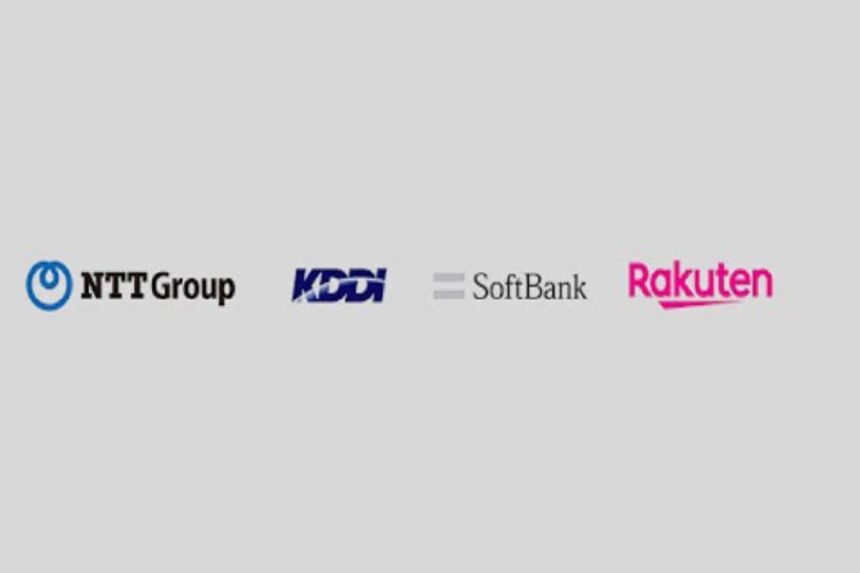In a historic move to strengthen the country’s communication resilience during natural disasters, Japan’s four major mobile network operators—NTT Group, KDDI Corporation, SoftBank Corp., and Rakuten Mobile—have announced an agreement to jointly restore communication networks in emergency situations. The collaborative framework is designed to ensure that essential connectivity is swiftly restored during large-scale disasters, ensuring minimal disruption to vital services.
Key Objectives of the Disaster Response Agreement
The core aim of this agreement is to maintain and restore connectivity when the country’s infrastructure is severely impacted by natural disasters such as earthquakes, floods, and typhoons. By pooling their resources, Japan’s telecoms plan to create a more agile and efficient disaster recovery process that can be deployed quickly in the face of widespread damage.
Under this framework, all four operators will share crucial network assets, including telecommunications infrastructure, business facilities, storage sites, and refueling stations. This mutual sharing of resources will help ensure that the restoration of services is prioritized and carried out swiftly in affected regions.
Launch Date and Scope of the Agreement
The agreement officially commenced on December 1, 2024, marking a significant milestone in the country’s efforts to bolster disaster resilience. Although it was formally announced in mid-December, the collaborative framework has already begun operating, focusing on ensuring uninterrupted communication even in the most challenging disaster scenarios.
This initiative is particularly significant given Japan’s vulnerability to natural disasters. Earthquakes, in particular, have previously caused extensive damage to both the physical infrastructure and communication systems of the country. This new framework represents a strategic effort to mitigate those risks and protect citizens and vital institutions during emergencies.
The Role of Japan’s Major Telecom Operators
Japan’s four main telecom operators bring a wealth of infrastructure, expertise, and resources to the table, enabling them to rapidly deploy a unified response when disasters strike. Here’s a breakdown of the organizations involved:
- NTT Group: This conglomerate includes several key players in Japan’s telecom sector, such as NTT Corp, NTT East, NTT West, NTT Docomo, and NTT Communications. NTT is widely regarded as the backbone of Japan’s communication network.
- KDDI Corporation: Known for its AU mobile brand, KDDI is one of Japan’s largest telecom companies and provides both mobile and broadband services.
- SoftBank Corp.: A prominent telecom company, SoftBank has a strong presence in the mobile and broadband markets and also offers various technology and internet services.
- Rakuten Mobile: Part of the broader Rakuten ecosystem, Rakuten Mobile has been a disruptive force in Japan’s telecom landscape, focusing on low-cost mobile services and innovation.
How the Agreement Benefits the Public
The most important aspect of this agreement is the ability to restore communication networks as quickly as possible after a disaster. With these operators working together, the country can expect faster assessments of damage, better resource allocation, and a more coordinated response.
This cooperation ensures that emergency communication services, including those provided to hospitals, municipal facilities, and other essential services, are quickly reinstated. By identifying disruptions early and taking swift action, Japan aims to minimize the impact on its citizens during critical times.
Disaster-Resilient Network Infrastructure
Japan’s mobile infrastructure is vast, yet susceptible to catastrophic damage during extreme events. In the past, communications breakdowns during earthquakes and other natural disasters have hampered rescue efforts and emergency services. The new disaster recovery framework specifically addresses these vulnerabilities by enabling a more flexible and rapid restoration process.
Key Features of the Framework
Shared Resources for Swift Recovery
The framework includes a variety of shared resources. These assets include but are not limited to:
- Business facilities: Ensuring that telecommunications companies can keep their operations running even if their main offices are damaged.
- Accommodation: Providing lodging for essential personnel working around the clock to restore services.
- Storage sites: Central locations for equipment and parts that may be needed during a disaster.
- Refueling stations: Ensuring that operators have access to fuel for emergency generators, which are critical for maintaining communication systems when power grids fail.
This broad sharing of resources will help ensure that the network can be restored as quickly as possible, even in the most remote or hard-hit areas.
Collaboration on Damage Assessment and Restoration
One of the most important aspects of the agreement is the joint effort to assess damage and restore services. The operators will share information on the status of their networks, allowing for a more accurate and efficient response. This collaboration is particularly crucial when determining which areas need immediate attention, such as hospitals or other critical infrastructure.
Additionally, the sharing of data on network outages and other disruptions will enable the carriers to prioritize resources effectively. This coordinated effort ensures that essential services are restored with minimal downtime.
Japan’s Vulnerability to Natural Disasters
Japan is one of the most disaster-prone countries in the world, with frequent earthquakes, tsunamis, and typhoons affecting large portions of the nation. The 2011 Tōhoku earthquake, for example, caused widespread infrastructure damage and communication breakdowns that made it difficult for citizens to receive updates or access emergency services.
In light of these ongoing risks, Japan’s telecom operators have recognized the need to work together to ensure that communication networks are resilient enough to withstand and recover from large-scale disasters.
A More Resilient Japan
The disaster response framework between Japan’s four major mobile network operators represents a critical step forward in the country’s disaster preparedness efforts. By pooling their resources and expertise, these telecom companies are ensuring that communication remains available even in the most challenging circumstances. This initiative will not only help restore services quickly but also support the country’s broader efforts to enhance resilience in the face of natural disasters.
The combined efforts of NTT Group, KDDI Corporation, SoftBank, and Rakuten Mobile underscore a shared commitment to public safety and service continuity, benefiting millions of people across Japan during times of crisis.
FAQ Section
1. Why are Japan’s telecom operators collaborating on disaster response?
The collaboration aims to ensure rapid restoration of communication networks during large-scale disasters, which are frequent in Japan. By sharing resources, the carriers can provide faster and more efficient disaster response.
2. What resources will be shared among Japan’s telecom operators?
The operators will share business facilities, accommodation, storage sites, refueling stations, and network assets to restore services quickly in affected areas.
3. When did the disaster response agreement begin?
The agreement officially started on December 1, 2024.
4. How will this agreement help restore communication networks?
By coordinating efforts, sharing information, and deploying resources collectively, the operators can assess damage faster and restore essential communication services more efficiently.
5. How does Japan’s vulnerability to natural disasters impact its communication infrastructure?
Natural disasters, particularly earthquakes, have caused significant damage to Japan’s infrastructure in the past, including disruptions to mobile networks. This framework is designed to address those vulnerabilities by ensuring faster recovery.



















